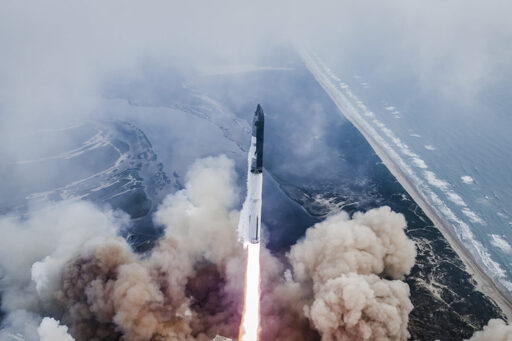The skies overhead are already teeming with satellites. But their orbiting numbers will skyrocket in the near future as the commercial and international space race takes off. Three projects alone — SpaceX’s Starlink, China’s Guowang megaconstellation, and Donald Trump’s proposed Golden Dome missile defense system — will launch tens of thousands of new satellites. Today’s 12,000 satellites could, according to some estimates, grow to 60,000, or even 100,000 total satellites by 2030, as a space industry already worth hundreds of billions of dollars sees rapid growth. This 21st-century space race, while a boon for communications and Earth monitoring, is sending up a red flag with experts, who warn that the tech advances satellite may bring are linked to a growing number of Earth environmental impacts stretching from the industry’s supply chain here on Earth, into the upper atmosphere and out into space itself. With countries initiating or expanding their space programs (including the U.S., EU, India, Japan, China, Russia, South Korea and the United Arab Emirates), and commercial efforts all in full swing, “we’re moving towards an industry that could cause a lot of damage to the environment if we don’t regulate it or understand it,” now, says Eloise Marais, an atmospheric chemist at University College London, U.K. The industry’s toll stretches from its ground-based, energy-guzzling data centers, to metal-shedding rocket launches, to tons of orbiting space junk and debris regularly plummeting back to Earth. Among the risks are poorly understood space age atmospheric pollutants that could harm the ozone…This article was originally published on Mongabay
From Conservation news via this RSS feed


